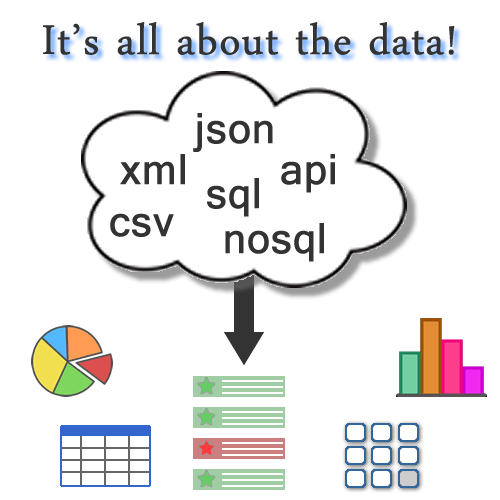
Quiz Review
The following are the primary take-aways from this "It's all about the data!" section of What Makes the Web Work?.
(almost) All websites use data!
You can certainly make a website without a database or pulling data from some outside source. However, in today's connected world, it is very rare to find a website that does not have a back-end database, pull data from a third-party api, or at least send data to a site analyics tool (e.g. Google Analytics).
Data can be passed into our website in a variety of ways!
There are two primary ways websites access data: (1) before each page is created and (2) after the page is sent to the user.
Server-Side
Traditional data-access has been done on the web-server. As the server is building the requested page, it queries its database for the needed data and then uses that data to as the page is "rendered".
Client-Side
Today, many websites are passing the responsibily for accessing the data down to the browser. The web-server builds the requested page with instructions on how to access the data and what to do with the data once it is received.
XML, JSON, and CSV are widely used data formats!
There are three primary ways data is sent to and back from web pages are:
- XML eXtensible Markup Language is characterized by
<and>used to surround tags. - JSON JavaScript Object Notation was originally derived from Javascript but is now used in many programming languages.
- CSV Comma-Separated Values is poplular for transporting data from datasets into spreadsheets (e.g. Excel).